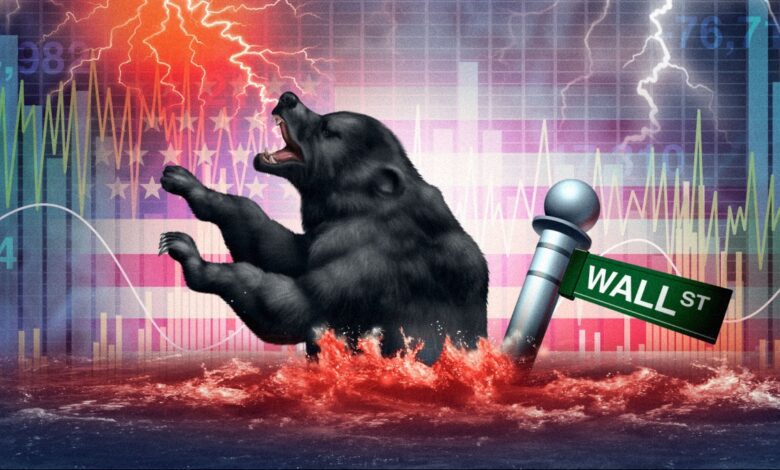The Failed Big Short: When Being Right Wasn’t Enough
While Michael Burry and John Paulson walked away with billions, a hidden class of investors predicted the 2008 crash perfectly—and lost everything.

We all know the story. We have watched the movie The Big Short. We cheer for the eccentrics and the outcasts who saw the housing bubble for the fraud it was, placed their bets, and walked away with fortunes while the global economy burned. We assume that in the financial markets, being right is the only thing that matters. If you predict the avalanche, you survive the slide.
But that narrative leaves out a darker, more ironic reality. Dozens of sophisticated funds correctly identified the housing bubble, shorted it, and still lost money. Some even collapsed entirely. They held the winning lottery ticket, but the lottery commission went out of business before they could cash it.
The 2008 crisis wasn’t caused by evil people trying to destroy the economy; it was caused by incentive structures that rewarded short-term profits over long-term stability. Mortgage brokers were paid for volume, not quality. Rating agencies were paid by the banks whose securities they rated. In this chaotic environment, knowing the truth wasn’t enough. You needed a solvent counterparty, perfect timing, and a team of lawyers to fight the zombies of Wall Street.
The Nightmare of Counterparty Risk
The most terrifying realization for a short seller in 2008 wasn’t that the market might rally; it was that the bank holding their money might vanish. The scene in The Big Short where the investors worry about their swaps highlights this exact danger. They risked the institution that held the other end of the swaps going under and getting nothing.
This wasn’t a theoretical fear. It became a reality on September 15, 2008, when Lehman Brothers filed for bankruptcy.

Source: Extractor YouTube
Consider the tragic case of MKM Longboat Capital. Based in London, this $1.5 billion hedge fund had done its homework. They managed a multi-strategy fund that included short positions against the crumbling financial infrastructure. By all accounts, they were right. But they made one fatal mistake: they used Lehman Brothers International (Europe) as their prime broker.
When Lehman collapsed, it didn’t just default on its debts; it froze the accounts of its clients. MKM Longboat found its assets, including its winning trades and collateral, trapped inside the administration of Lehman’s UK arm. They couldn’t access their cash to pay their own investors or meet margin calls elsewhere. Despite being solvent and strategically brilliant, the fund effectively suffocated. MKM Longboat shut its doors in late 2008, a victim of the very collapse it had predicted.
This highlights the mechanism of the disaster. Credit default swaps played a large role in the financial crisis of 2008 for many of the same reasons described above. Large banks which traded in CDSs were forced to declare bankruptcy when a large number of the underlying credit instruments defaulted at once, sending shockwaves throughout the United States economy.
Other funds faced similar freezing scenarios. RAB Capital, a prominent UK hedge fund, saw its Special Situations fund heavily impacted. Their assets, including Treasury bills that should have been the safest investment on earth, were rehypothecated, lent out by Lehman, and subsequently trapped in the wreckage. Amber Capital and GLG Partners also faced significant exposure, forcing them to fight for years to retrieve assets that should have been liquid.
The Zombie Estate and the Flip Clause
While some funds died immediately, others entered a decade-long purgatory. This brings us to the strange case of Magnetar Capital. Magnetar is often villainized in financial history for helping create Collateralized Debt Obligations (CDOs) specifically to bet against them. Regardless of the ethics, their trade was a financial winner. They held huge short positions effectively guaranteed by Lehman Brothers Special Financing.
When Lehman crashed, Magnetar expected a payout. Instead, they got a lawsuit.
Lehman Brothers didn’t just disappear. It transformed into a “Bankruptcy Estate,” a legal entity with one goal: clawing back every penny possible to pay creditors. The estate became a “zombie bank,” dead in operation but alive in the courtroom, hiring high-powered lawyers to sue the very people it owed money to.
The legal battle centered on something called the “Flip Clause.” The contracts stated that if Lehman went bankrupt, the priority of payment would flip from Lehman to the investors, ensuring Magnetar got paid first. Lehman’s estate argued that this clause was illegal under bankruptcy law. They claimed that the money belonged to the estate, not the investors.
Consequently, Magnetar became a defendant in Lehman Brothers Special Financing Inc. v. Bank of America, Magnetar, et al. They spent over ten years in court fighting to secure their collateral. While they eventually won the legal right to the money, their profits were locked up in litigation long after the crisis ended. It serves as a stark reminder that holding on too long turned a quick profit into a decade-long headache.
The Dante investors faced a similar fate. Perpetual Trustee and Belmont Park Investments bought notes in the “Dante Programme,” a CDO structure created by Lehman. When the bank failed, the investors tried to claim the $200 million in collateral. Lehman sued, triggering an international legal battle where U.S. and UK courts disagreed for years on who owned the cash. Being right about the credit markets meant nothing when the courts couldn’t agree on the law.
Structural Failures: The “Safe” Bet That Failed
Beyond the legal battles, some investors lost because they tried to be too clever. They employed strategies that looked great on paper but fell apart when liquidity evaporated.
Take Peloton Partners, a London-based hedge fund run by former Goldman Sachs alumni. They correctly identified that subprime mortgages were toxic. However, they didn’t just short the market. They played a capital structure arbitrage strategy. They shorted the risky, junk-rated bonds but went long on the AAA-rated slices of the same mortgage bundles. Their logic dictated that while the junk would fail, the AAA bonds would remain safe.
They were wrong. When panic hit in early 2008, banks stopped accepting AAA bonds as collateral. The price of these safe assets crashed, not because they were defaulting, but because no one had the cash to buy them. Peloton faced massive margin calls on its AAA positions. The banks seized their assets and liquidated the portfolio. Peloton forced a fire sale of its winning short positions to pay for its losing safe positions. They closed their doors in February 2008, mere months before the market bottomed out.
A similar fate befell those playing the Negative Basis trade. In this strategy, investors bought a mortgage bond and simultaneously bought a CDS to insure it, pocketing the difference in yield. It was supposed to be risk-free arbitrage. But the trade relied on borrowed money. When bond prices plummeted, banks demanded more collateral. Investors pointed to their insurance contracts, screaming that they were hedged, but the banks didn’t care. They forced a liquidation, locking in losses right before the insurance would have paid out.
The Winners: Timing and Capital
Contrasting these failures with the winners illuminates the fine line between ruin and fortune. The survivors had the capital to withstand the volatility and the foresight to pick solvent counterparties.
The character Mark Baum in The Big Short made approximately $1 billion from the 2008 housing market crash, based on the movie’s portrayal and related articles. This amount is a fictionalized representation of the real-life character Steve Eisman, who profited significantly from shorting the market. Eisman succeeded because he operated under the umbrella of Morgan Stanley (NYSE: MS). While he feared Morgan Stanley might collapse, a valid fear given the firm’s $9 billion loss from trader Howard Hubler, the bank survived, preserving Eisman’s winnings.
Similarly, in 2008, Michael Burry personally made $100 million, while his investors in Scion Capital earned a total of $725 million from his bet against the housing market. He profited by shorting subprime mortgage-backed securities through credit default swaps, a move famously documented in the book and movie The Big Short. Burry survived because he used a “side pocket” clause to freeze investor withdrawals, preventing his backers from forcing him out of the trade early.

Source: Real Theories YouTube
Then there were the titans who stepped in to pick up the pieces. Who made the most money in the 2008 crisis? The list includes Warren Buffett, John Paulson, and Jamie Dimon.
Warren Buffett used the liquidity of Berkshire Hathaway (NYSE: BRK.A; BRK.B) to buy when everyone else was selling. He purchased $5 billion in perpetual preferred shares in Goldman Sachs (NYSE: GS) and another $3 billion in General Electric (NYSE: GE), securing 10% interest rates and warrants that would eventually yield billions in profit. He executed similar maneuvers with Dow Chemical (NYSE: DOW) and Swiss Re, providing a lifeline to American industry while securing a fortune for his shareholders.
John Paulson, famous for his short bet, pivoted quickly in 2009. He established massive positions in Bank of America (NYSE: BAC) and Citigroup (NYSE: C), betting on the recovery. Meanwhile, Jamie Dimon used the fortress balance sheet of JPMorgan Chase (NYSE: JPM) to acquire Bear Stearns and Washington Mutual for pennies on the dollar, cementing the bank’s dominance for the next decade. Even Deutsche Bank (NYSE: DB) played a role, serving as the counterparty for many of the “hero” investors who avoided Lehman.
The Verdict
The dust has settled, but the lessons remain sharp. When we ask who was responsible for the 2008 housing crisis, the answer points to the biggest culprit: The Lenders. Most of the blame is on the mortgage originators or the lenders. That’s because they were responsible for creating these problems. After all, the lenders were the ones who advanced loans to people with poor credit and a high risk of default.
The government eventually stepped in to stop the bleeding. On February 17, 2009, Obama signed into law the American Recovery and Reinvestment Act of 2009, a $787 billion economic stimulus package aimed at helping the economy recover from the deepening worldwide recession. This stimulus, combined with the bailouts of AIG and the banking sector, ensured that the counterparties for the surviving short sellers remained solvent.
For the investors of MKM Longboat and the litigators at Magnetar, however, the stimulus came too late or meant too little. They learned the hardest lesson of Wall Street: The market can remain irrational longer than you can remain solvent, and a winning bet is worthless if the casino burns down before you cash out. Being right is only half the battle; surviving the victory is the rest.
Small Cap News Movers & Winner Deep Dive – By WealthyVC.com
We scan over 10,000 publicly listed stocks across all seven North American exchanges to uncover the market-moving news that actually matters—focusing on high-quality, liquid, growth-oriented companies in sectors attracting serious capital, like AI, blockchain, biotech, and consumer tech.
Each week, we publish Small Cap News Movers, a curated roundup of small and micro-cap stocks surging on meaningful catalysts. We break down what’s driving the move, tap into rumors swirling on social media, and surface sharp insights from both industry experts and retail sleuths.
From this list, we select one standout stock for our Small Cap Winner Deep Dive, released the next day, where we take a closer look at the fundamentals, narrative, and technicals that suggest this winner could keep running.
Powered by our proprietary 4-element, AI-driven analysis system, our goal is simple: cut through the noise, remove the emotion, and help investors dominate the small-cap market with momentum-driven strategies—completely free.
Sign up for email alerts to get the moves before our social media followers.
Read Next: Why Nvidia’s Tech Investments Could Transform the Entire AI Innovation Ecosystem
Join the Discussion in the WVC Facebook Investor Group
Do you have a stock tip or news story suggestion? Please email us at: invest@wealthyvc.com.
Disclaimer: Wealthy VC does not hold a position in any of the stocks, ETFs or cryptocurrencies mentioned in this article.




